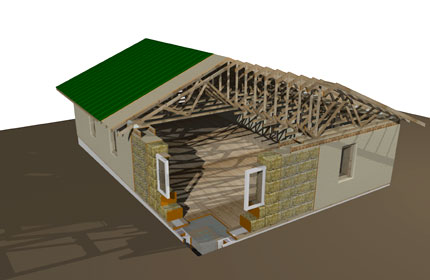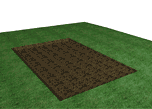





 |  |  | |
 | |||
 |  | ||
 |
Indigenous Builders Exchange Solar Energy Initiative
|
 |
 |
Straw Bale Construction

Straw Bale Construction Resources Nathaniel Corum, Building One House: A Handbook for Straw Bale Construction (Red Feather Development Group, 2004). Bruce King, Buildings of Earth and Straw: Structural Design for Rammed Earth and Straw Bale Architecture (Sausalito: Ecological Design Press, 1996). Paul Lacinski and Michel Bergeron, Serious Straw Bale: A Home Construction Guide for All Climates (White River Junction: Chelsea Green Publishers, 2000). Matts Myhrman and S.O. MacDonald, Build It with Bales: A Step-by-Step Guide to Straw Bale Construction (Tucson: Out on Bale Publishers, 1999). Athena and Bill Steen, and David Bainbridge with David Eisenberg, The Straw Bale House (White River Junction: Chelsea Green Publishers, 1994). CASBA--California Straw Building Association
DCAT--The Development Center for Appropriate Technology
EBNet--Ecological Building Network
The Last Straw Journal
|  |

Why Straw Bale Construction? At the foundation of the American Indian Sustainable Housing Initiative is a belief that affordability and sustainability do not have to exist independently. Thus, we chose straw-bale construction as a logical fit for several reasons. • Straw—an agricultural waste product of wheat production—is an environmentally sustainable and readily available option for Southwest and Northern Plains reservations where wheat grows on thousands of acres. • Straw bale construction is builder-friendly: Indian families, volunteers and community members can quickly become skilled participants in the construction of their own homes. • Our approach results in a relative cost savings of up to 60% in light of volunteer labor and donated materials as compared with a traditionally contracted starter home. • Structures built with straw have an extremely high insulation value, which, when coupled with lower energy consumption, results in savings that can then strengthen the tribal economic base. •Many educational resources exist on straw bale construction methods, and all states have implemented straw bale building codes. • Straw bale construction qualifies for HUD, USDA, and conventional home mortgages. | ||||
| Copyright
2006, Red Feather Development Group. All rights reserved. Contact via info@redfeather.org.
Web hosting. | ||||||||||